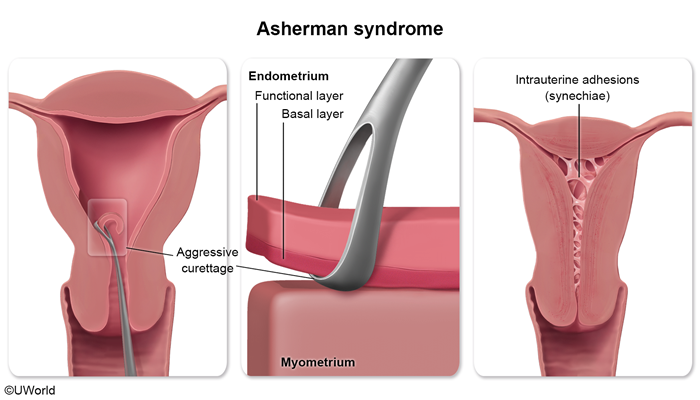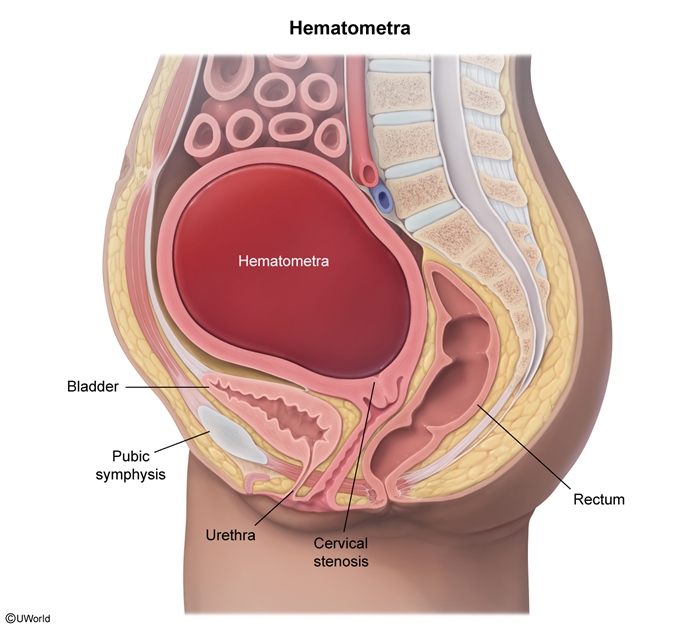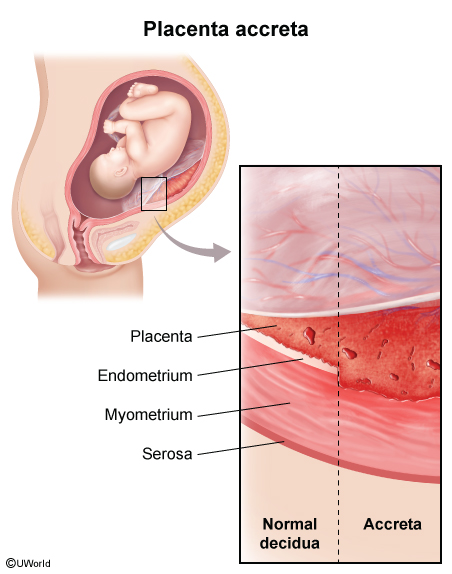Intrauterine Adhesions
Article Sections
Introduction
Intrauterine adhesions, also known as intrauterine synechiae or Asherman syndrome, are bands of tissue that form within the uterine cavity. They can result in partial or complete obliteration of the uterine cavity and may lead to impaired reproductive function.
Pathophysiology and risk factors
Normal endometrium is composed of 2 layers: the stratum functionalis (functional and regenerative layer) that lines the uterine cavity and the stratum basalis (basal layer) that lies between the stratum functionalis and the myometrium. The stratum functionalis is hormonally responsive and thickens over the course of the menstrual cycle. It is shed at the end of the menstrual cycle through menses and is then regenerated by the cells of the permanent, underlying stratum basalis.
Intrauterine adhesions develop from damage to the stratum basalis
Continue Learning with UWorld
Get the full Intrauterine Adhesions article plus rich visuals, real-world cases, and in-depth insights from medical experts, all available through the UWorld Medical Library.
Figures



